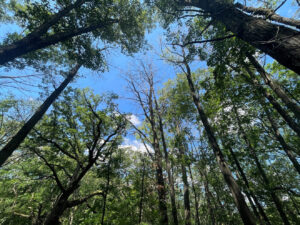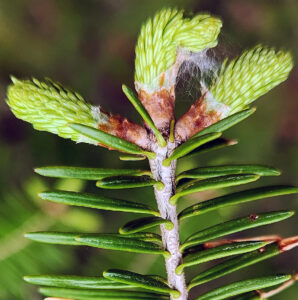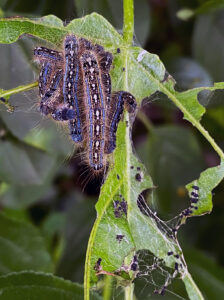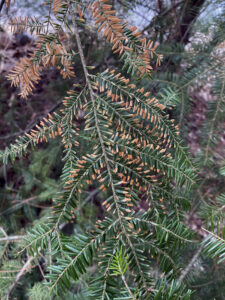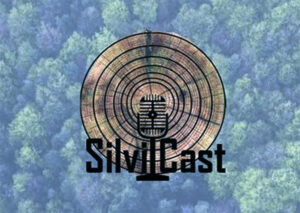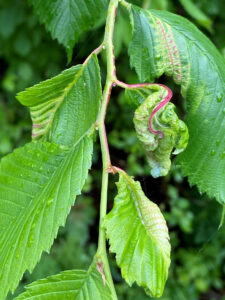
A group of elm leaves shows varying levels of wrinkling and curling, due to feeding by wooly elm aphids on the underside of the leaves. / Photo Credit: Linda Williams, Wisconsin DNR
By Linda Williams, DNR Forest Health Specialist, Woodruff
Linda.Williams@wisconsin.gov or 920-360-0665
Woolly elm aphids (Eriosoma americanum) are a minor pest of American elm. The aphids’ feeding causes leaves to curl at the edges and develop a characteristic wrinkled appearance.
Uncurling the leaves exposes many pale gray aphids on the underside of the leaves, which are protected by the rolled leaf.
Continue reading “Woolly Elm Aphid Causes Elm Leaves To Curl”


